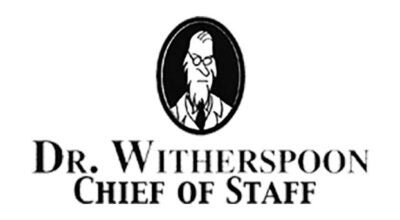‘Put a Freeze on Winter Fires’ campaign kicks off
Published 7:28 am Monday, December 7, 2015
NFPA and USFA launch “Put a Freeze on Winter Fires” campaign to promote home fire safety during winter months. Winter is the peak season for U.S. home fires.
The weather outside may be frightful this winter, but a fire in your home is far from delightful.
Unfortunately, the risk of home fire does increase during the winter months: December, January, February and March are the leading months for U.S. home fires.
To help better educate the public about winter fire hazards and ways to prevent them, the National Fire Protection Association (NFPA) and the United States Fire Administration (USFA) are teaming up to promote “Put a Freeze on Winter Fires.”
The annual campaign, now in its fifth year, addresses the leading factors that collectively contribute to a higher risk of home fires and related hazards during the winter months.
These include heating, holiday decorating, Christmas trees, candles, electrical issues and carbon monoxide poisoning.
“The colder months and holiday season bring a set of fire risks that can quickly turn this festive, wintry time of year into a tragic one,” said Lorraine Carli, NFPA’s vice president of Outreach and Advocacy.
“With a little added awareness and by following some basic safety precautions, people can greatly reduce the likelihood of winter home fires and ensure a warm, fire-safe season.”
Following is an overview of the safety issues “Put a Freeze on Winter Fires” addresses; the campaign runs December through February:
Cooking
While cooking fires are the leading cause of U.S. home fires and injuries year-round, Christmas Day and Christmas Eve ranked second and third (after Thanksgiving) as the leading days for home cooking fires.
On Christmas Day in 2013, there was a 58 percent increase in the number of home cooking fires than on a typical day, and a 54 percent increase on Christmas Eve.
Between 2009 and 2013, cooking equipment was involved in annual average of 162,400 reported home fires that resulted in 430 civilian deaths, 5,400 injuries and $1.1 billion in direct property damage per year. Unattended cooking was by far the leading cause of these fires and fire deaths.
Heating
Heating is the second leading cause of U.S. home fires, deaths and injuries; December, January and February are the peak months for heating fires.
In 2009-2013, heating equipment was involved in an estimated average of 56,000 reported home fires per year, which caused 470 deaths, 1,490 injuries and $1 billion in direct property damage.
Home heating equipment was involved in 16 percent of home fires, 19 percent of the home fire deaths, 12 percent of the home fire injuries, and 15 percent of the direct property damage from home fires.
Failure to clean chimneys and other heating equipment was the leading cause of these fires. However, space heaters, including portable heaters and those that are permanently installed, were involved in five out of six home heating fire deaths.
Heating equipment was too close to things that can burn, such as upholstered furniture, clothing, mattresses or bedding, etc. in roughly half of the fire deaths.
Christmas Trees
Christmas tree fires are not common, but when they do occur, they’re much more likely to be deadly than most other fires.
One of every 31 reported home Christmas tree fires results in a death each year, compared to an annual average of one death per 144 total reported home fires.
Between 2009 and 2013, Christmas trees were involved in an annual average of 210 home fires resulting in seven civilian deaths, 19 injuries and $17.5 million in direct property damage.
Electrical distribution or lighting equipment was involved in 38 percent of home Christmas tree fires.
Candles
December is the peak time of year for home candle fires; the top three days for home candle fires are New Year’s Day, Christmas, New Year’s Eve and Christmas Eve.
In December, 11 percent of home candle fires began with decorations, compared to 4 percent the rest of the year. Each year between 2009 and 2013, an average of 25 home candle fires were reported each day.
Overall, an estimated 9,300 home fires were caused by candles, resulting in 86 civilian deaths, 827 civilian injuries and $374 billion in direct property damage.
Holiday decorations
Between 2009 and 2013, U.S. fire departments responded to an annual average of 860 home fires that began with decorations (excluding Christmas trees).
These fires caused an annual average of one civilian death, 41 injuries and $13.4 million in direct property damage.
One fifth (20 percent) of the decoration fires started in the kitchen; one out of six (seventeen percent) started in the living room, family room or den.
Carbon Monoxide
Often called the invisible killer, carbon monoxide (CO) is an odorless, colorless gas created when fuels burn incompletely. In the home, heating and cooking equipment that burn fuel are potential sources of CO. In 2010,
U.S. fire departments responded to an estimated 80,100 non-fire incidents in which carbon monoxide was found, or an average of nine such calls per hour. The number of incidents increased 96 percent from 40,900 incidents reported in 2003. This increase is most likely due to the increased use of CO detectors, which alert people to the presence of CO.
About NFPA
Founded in 1896, NFPA is a global, nonprofit organization devoted to eliminating death, injury, property and economic loss due to fire, electrical and related hazards.




